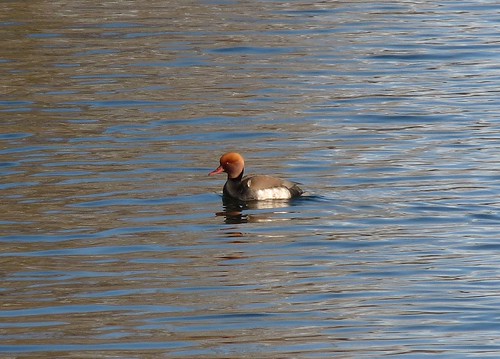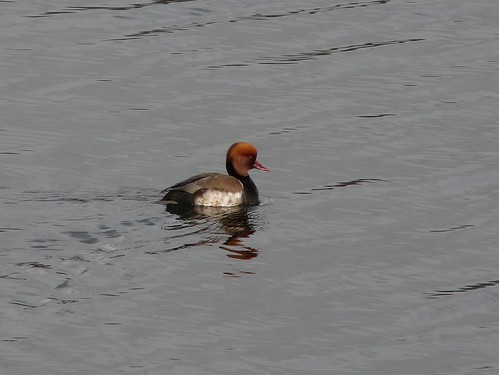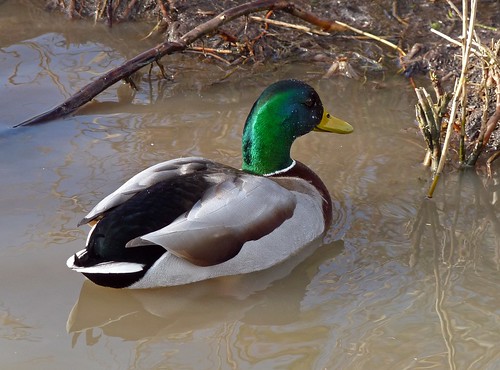After the success with the Bittern at Forest Farm we popped down the road to Cosmeston Lakes to search for the Red Crested Pochard that had taken up residence there. Within a couple of minutes we had spotted it lurking near the bridge between the two main lakes. Compared to the more common Pochard species that we typically see on our waterways, the Red Crested Pochard is a very exotic looking bird. In fact I’m pretty sure that the nearby Great Crested Grebe didn’t quite know what to make of it if its suspicious stares were anything to go by.
The Red Crested Pochard is an extremely rare visitor to South Wales, with what resident population there is in the UK being restricted to southern and Eastern England. These birds are mainly made up from captive escapees which have managed to establish a small breeding population numbering around twenty five pairs. Occasionally truly wild birds do put in an appearance after traveling over from mainland Europe. I am not yet sure which category this particular example falls into but it is certainly wild enough to count as a new tick for me.
Whilst walking around the lakes I also took the opportunity to take some pictures of the more common waterfowl that can often be overlooked. I realised how easy it is to miss out on the species that we see every day after noticing that I had very few pictures of Mallards. These really are very attractive birds when you get up close. The feather patterning on the above example is quite extraordinary and was catching the winter light nicely. The Canada Geese were also showing off well and it seemed a shame not to take advantage. I always like to try and capture Geese and Swans in action poses which happily they tend to oblige with. It also enabled me to answer the question that I am sure you have all been pondering for years; what is the colour of a Canada Gooses eyelid? White it would seem is the answer.







0 Comments